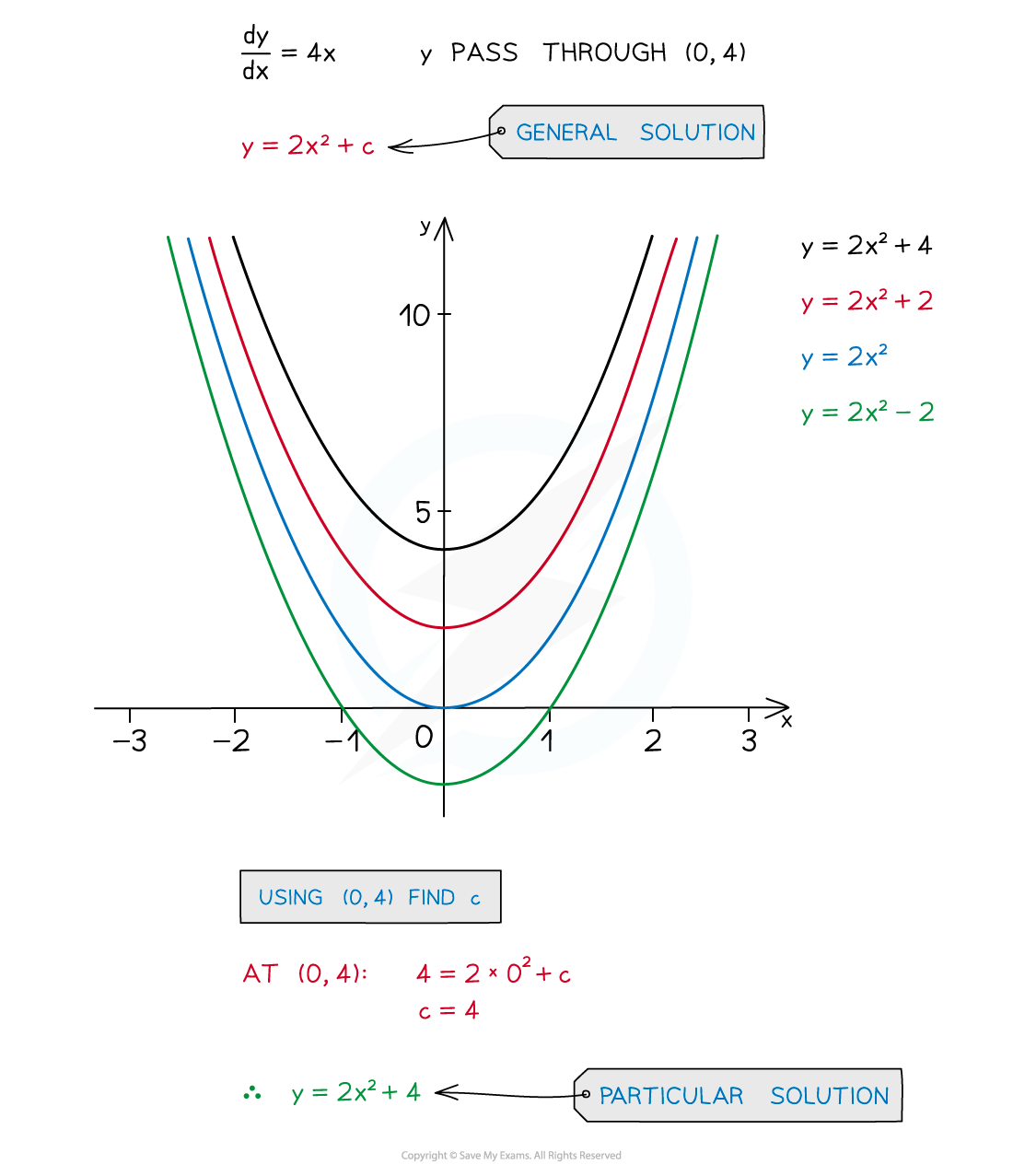Intro to Differential Equations (Edexcel A Level Further Maths) : Revision Note
General Solutions
What is a differential equation?

Any equation, involving a derivative term, is a differential equation
Equations involving only first derivative terms are called first order differential equations
Equations involving second derivative terms are called second order differential equations
What is a general solution?

Integration will be involved in solving the differential equation
ie working back to “y = f(x)”
A constant of integration, c is produced
This gives an infinite number of solutions to the differential equation, each of the form y = g(x) + c (ie y = f(x) where f(x) = g(x) + c)
… and the solution y= g(x) + c is called the general solutionThese are often called a family of solutions …
Worked Example
Find the general solution to the differential equation .

Particular Solutions
What is a particular solution?
Ensure you are familiar with General Solutions first
With extra information, the constant of integration, c, can be found
This means the particular solution (from the family of solutions) can be found

What is a boundary condition/initial condition?
A boundary condition is a piece of extra information that lets you find the particular solution
For example knowing y = 4 when x = 0 in the preceding example
In a model this could be a particle coming to rest after a certain time, ie v = 0 at time t
Differential equations are used in modelling, experiments and real-life situations
A boundary condition is often called an initial condition when it gives the situation at the start of the model or experiment
This is often linked to time, so t = 0
It is possible to have two boundary conditions
eg a particle initially at rest has velocity, v = 0 and acceleration, a = 0 at time, t = 0
for a second order differential equation you need two boundary conditions to find the particular solution
Worked Example
The velocity of a particle, initially at rest, is modelled by the differential equation , where
is the velocity of the particle and
is the time since the particle began moving.
a) Find the velocity of the particle after 3 seconds.

b) Find the time at which the particle comes to rest for the second time.


You've read 0 of your 5 free revision notes this week
Unlock more, it's free!
Did this page help you?
